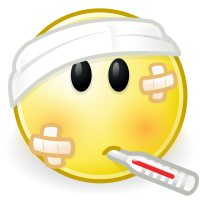Following celebratory events, both patients and employers are feeling chronic heartburn’s impact
What do the day after the Super Bowl, St. Patrick’s Day, Cinco de Mayo and the Fourth of July have in common? The day after national celebrations and holidays are often a time when many Americans – and their employers – feel the effects of food and alcohol overindulgence. For example, a 2016 study by the Workforce Institute suggested that 1 in 10 U.S. workers might have missed work the day (sick day) after the Super Bowl due to the game.1
Party favorites like alcohol, fatty foods and cola can all trigger heartburn.2 But chronically experiencing this symptom could signify a more serious condition.3 An estimated 1 in 5 Americans have gastroesophageal reflux disease,4 known as GERD, causing pain for both patients and their employers. Employees with GERD may experience 41 percent more sick leave days than others.5 Plus GERD symptoms cost the U.S. nearly $2 billion each week in lost productivity.6 These typical and atypical symptoms can include:
- Heartburn
- Chest pain
- Persistent cough
- Hoarseness
- Excessive throat clearing
- Trouble sleeping
- Allergies
- Dental problems including erosion, gum disease or bad breath
Managing Acid Reflux
Like personal preferences on party snacks, a patient’s approach to managing acid reflux disease should uniquely address his or her experience and be determined collaboratively with a physician—a gastroenterologist or surgeon that specializes in GERD diagnosis and treatment. Those with occasional heartburn may be advised to make diet and lifestyle changes.3 While others with consistent heartburn may take over-the-counter or prescription medications for GERD, such as proton pump inhibitors (PPIs).
Following diagnosis, a physician can also assess if adults with GERD symptoms are candidates for the TIF® procedure, a medical procedure and GERD treatment that addresses the anatomical issue that leads to reflux, without pills or incisions. Recently published data at the three-year post procedure mark showed that 83 percent of patients maintained elimination of all GERD symptoms, while 70 percent of patients had completely discontinued the use of prescribed or over-the-counter pills to treat the condition.7
Instead of shrugging off potential symptoms of GERD by taking a sick day, patients should talk to a physician about the condition, the TIF procedure and the treatment options that are best for them.
References
- Maroney, Joyce. Super Bowl Workplace Impact. The Workforce Institute. 03 Feb. 2016. Web. 13 Jan. 2017.
- International Foundation for Functional Gastrointestinal Disorders. Diet & Lifestyle Changes. Updated 12 February 2016. Accessed 17 January 2017.
- American College of Gastroenterology. Understanding GERD. Accessed 17 January 2017.
- El-Serag H. Update on the epidemiology of gastro-oesophageal reflux disease: a systematic review.Gut. 2014 June; 63(6): 871–880.
- Wahlqvist P, Brook RA, Campbell SM, et al. Objective measurement of work absence and on-the-job productivity: A case-control study of US employees with and without gastroesophageal reflux disease.J Occup Environ Med 2008; 50(1):25-31.
- International Foundation for Functional Gastrointestinal Disorders. GERD Costs America Nearly $2 Billion Each Week in Lost Productivity. Updated 03 August 2015. Accessed 17 January 2017.
- EndoGastric Solutions Announces Publication of Long-Term Data Demonstrating TIF® 2.0 Procedure Offers Durable Treatment of Chronic GERD
NP02370-06A

